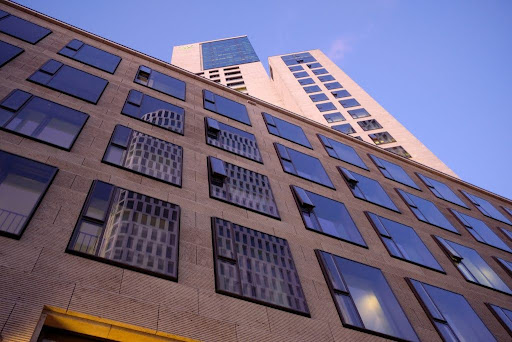
Comprehensive Guide to Historic Preservation Services
Preserving our architectural heritage is more than a passion; it’s a responsibility. Historic building preservation services are crucial for maintaining the integrity and beauty of historic buildings, ensuring they remain functional and relevant for future generations. In this guide, we will delve into various aspects of historic preservation services, including NYC Landmark Preservation, historic building preservation, existing façade repair, building roofing system repair, and building window replacement design.
What Are Historic Preservation Services?
Historic preservation services involve a range of activities aimed at conserving and protecting buildings of historical significance. These services ensure that the architectural and cultural heritage embodied in these structures is maintained for future generations. Preservation efforts can include structural repairs, aesthetic restorations, and adaptations to meet modern standards while respecting the building’s historical integrity.
The Importance of Historic Preservation Services
Preserving historic buildings is essential for several reasons:
- Cultural Significance: These buildings tell the story of a community’s past, reflecting the historical events and architectural styles of their time.
- Aesthetic Value: Historic structures add beauty and uniqueness to urban landscapes, often becoming iconic landmarks.
- Economic Benefits: Preservation can boost local economies through tourism and the revitalization of neighborhoods.
- Environmental Impact: Restoring existing buildings is more sustainable than new construction, reducing the environmental footprint.
NYC Landmark Preservation
NYC Landmark Preservation is a specialized field dedicated to protecting New York City’s numerous historic landmarks. The NYC Landmarks Preservation Commission (LPC) plays a crucial role in this effort, designating and regulating buildings and districts of historical, cultural, and architectural significance.
Key Aspects of NYC Landmark Preservation
- Designation: The LPC designates landmarks and historic districts based on their historical and architectural significance.
- Regulation: Once designated, any alterations or repairs to these buildings must be approved by the LPC to ensure they adhere to preservation standards.
- Restoration Projects: Preservation experts undertake meticulous restoration projects to maintain the original character and integrity of these buildings.
Historic Building Preservation
Historic building preservation involves maintaining and restoring structures to reflect their original state. This process can be complex, requiring a thorough understanding of historical construction techniques and materials.
Steps in Historic Building Preservation
- Assessment: Detailed assessment of the building’s current condition, including structural integrity, materials, and historical significance.
- Research: Historical research to understand the building’s original design, usage, and changes over time.
- Planning: Developing a preservation plan that addresses structural repairs, material conservation, and aesthetic restoration.
- Execution: Implementing the preservation plan with skilled craftsmen and appropriate materials to ensure authenticity.
Existing Façade Repair
The existing façade repair is a critical component of historic preservation, as the façade often defines the building’s character and appeal.
Common Façade Issues
- Cracking and Spalling: These can be caused by age, weathering, and structural shifts.
- Water Damage: Often due to poor drainage or roofing issues.
- Material Deterioration: Brick, stone, and other materials can degrade over time.
Façade Repair Techniques
- Cleaning: Gentle cleaning methods to remove dirt and pollutants without damaging the material.
- Repointing: Replacing deteriorated mortar with new, historically accurate mortar.
- Structural Repairs: Addressing any underlying structural issues that contribute to façade damage.
- Surface Treatments: Applying protective coatings to enhance durability and appearance.
Building Roofing System Repair
Building roofing system repair is essential to protect historic buildings from water damage and structural deterioration.
Key Considerations for Historic Roofing
- Material Selection: Using historically appropriate materials like slate, tile, or metal.
- Structural Integrity: Ensuring the roofing structure can support the chosen materials.
- Weatherproofing: Incorporating modern techniques to enhance durability while maintaining historical accuracy.
Steps in Roofing System Repair
- Inspection: Thorough inspection to identify damage and assess the roof’s overall condition.
- Material Matching: Finding materials that match the original as closely as possible.
- Repair or Replacement: Repairing damaged sections or replacing the entire roof while preserving historical features.
- Maintenance: Regular maintenance to prevent future issues and prolong the roof’s lifespan.
Building Window Replacement Design
Building window replacement design in historic preservation involves replacing windows while maintaining the building’s historical character.
Challenges in Window Replacement
- Matching Styles: Finding or custom-making windows that match the original design and materials.
- Energy Efficiency: Balancing historical accuracy with modern energy efficiency standards.
- Regulatory Compliance: Ensuring replacements comply with local preservation regulations.
Steps in Window Replacement Design
- Assessment: Evaluating the condition and historical significance of existing windows.
- Design: Designing new windows that replicate the originals in appearance and function.
- Approval: Obtaining necessary approvals from preservation authorities.
- Installation: Carefully installing new windows to maintain the building’s integrity.
FAQs About Historic Preservation Services
What qualifies a building for historic preservation?
Buildings typically qualify for historic preservation with significant historical, architectural, or cultural value. Local or national preservation agencies often determine this.
How do I get my building designated as a historic landmark?
To get a building designated as a historic landmark, you must submit a nomination to the relevant preservation commission, such as the NYC Landmarks Preservation Commission, which will evaluate the building’s significance.
Are there financial incentives for historic preservation?
Yes, there are often financial incentives, including tax credits, grants, and loans, available to preserve historic buildings. These incentives can help offset the costs of restoration and maintenance.
How does historic preservation impact property value?
Historic preservation can increase property value by enhancing the building’s aesthetic appeal and cultural significance, making it more attractive to buyers and tenants.
Can modern materials be used in historic preservation?
Modern materials can be used in historic preservation as long as they are compatible with the original materials and do not detract from the building’s historical integrity. Preservation experts strive to balance modern functionality with historical accuracy.
Conclusion
In conclusion, historic preservation services are essential for maintaining our built heritage’s cultural, aesthetic, and economic value. Whether it’s through NYC Landmark Preservation, historic building preservation, existing façade repair, building roofing system repair, or building window replacement design, each aspect plays a crucial role in keeping history alive for future generations.






